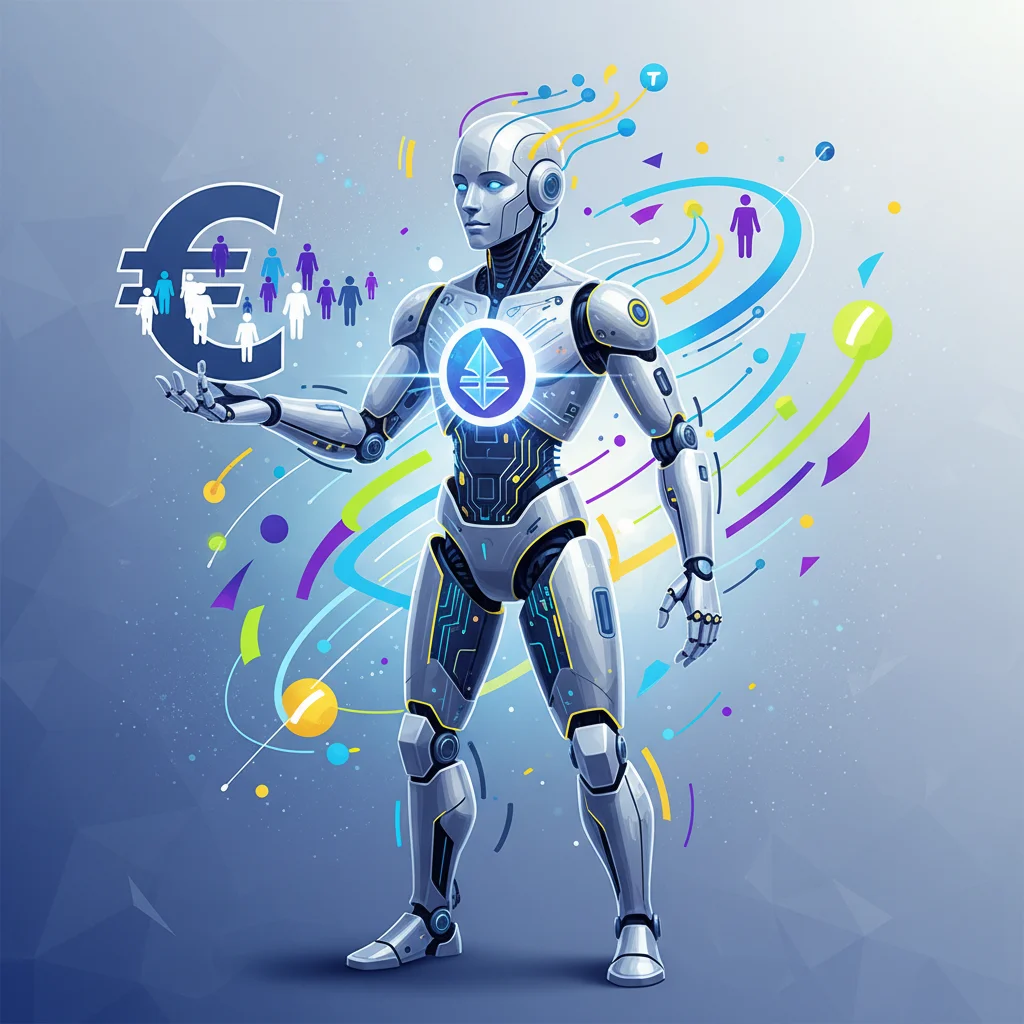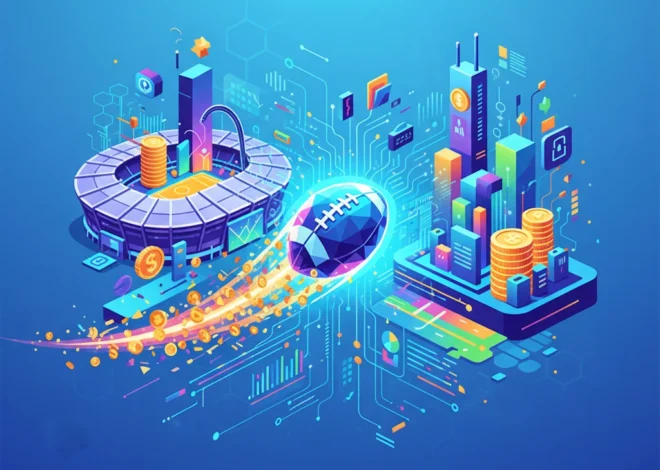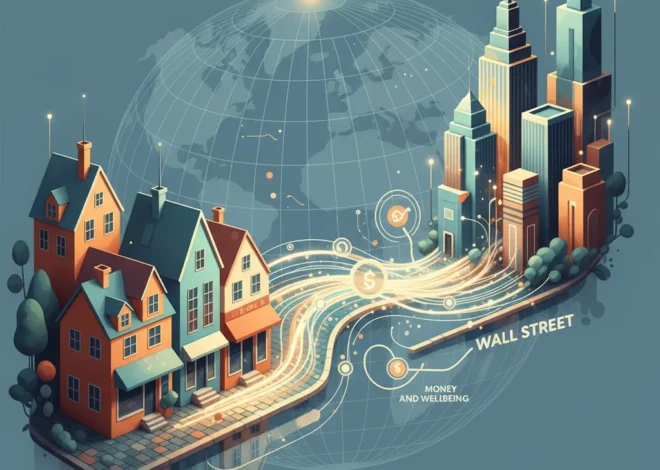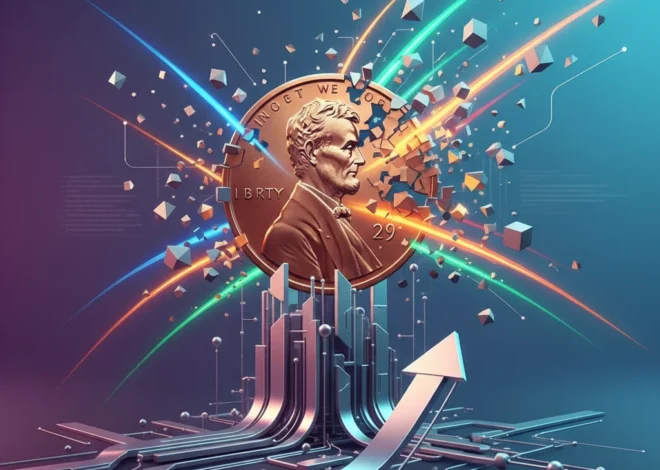
Crypto’s New Body: Why Tether is Betting a Billion Euros on Humanoid Robots
In the world of technology and finance, some partnerships feel inevitable, while others come straight out of a science fiction novel. The latest headline-grabber falls squarely in the latter category: Tether, the colossal force behind the world’s largest stablecoin, is in talks to pour a staggering €1 billion into Neura, a German AI robotics startup. Yes, you read that right. The company that digitizes the dollar is now looking to fund the creation of physical, autonomous, humanoid robots.
This isn’t just another venture capital deal; it’s a profound statement about the future. It signals a major convergence between the abstract world of digital currency and the tangible world of artificial intelligence and automation. For developers, entrepreneurs, and tech professionals, this move is a seismic event, raising fascinating questions about the long-term vision of crypto’s biggest players and the future of innovation itself. Why is a financial powerhouse built on blockchain code suddenly so interested in nuts, bolts, and neural networks? Let’s unpack this monumental bet.
The Unlikely Duo: A Crypto Giant and a Robotics Pioneer
To understand the gravity of this potential partnership, we first need to appreciate the two players at the table. They come from seemingly different universes, but their potential union could redefine both.
Tether: More Than Just a Stablecoin
For many, Tether is synonymous with USDT, the stablecoin pegged to the U.S. dollar that acts as the lifeblood of the crypto trading ecosystem. With over $110 billion in circulation, it’s a cornerstone of the digital asset economy. But in recent years, fueled by immense profits from its reserves, Tether has quietly embarked on an ambitious diversification strategy. The company is transforming from a crypto-native entity into a sprawling investment portfolio with a clear focus on deep tech.
They’ve already funneled hundreds of millions into a variety of sectors, including:
- AI and Cloud Computing: A significant investment in Northern Data, a provider of high-performance computing solutions, signals Tether’s ambition to own a piece of the foundational infrastructure powering the AI revolution.
- Biotechnology: Venturing into life sciences shows a willingness to bet on long-term, high-impact innovation far beyond the confines of fintech.
- Peer-to-Peer Communication: Investments in platforms like Holepunch underscore a commitment to decentralized technologies.
This move into robotics isn’t a random shot in the dark; it’s the next logical, albeit audacious, step in a calculated plan to deploy capital into the technologies that will shape the next century.
Neura: The Ambitious Newcomer in Humanoid Robotics
On the other side of the deal is Neura, a German startup with a bold vision. Founded by David Reger, Neura aims to crack one of the toughest nuts in technology: creating humanoid robots that can operate safely and effectively alongside people. While newer to the scene than giants like Boston Dynamics, Neura is focused on developing the sophisticated software and cognitive architecture—the “brain”—that will allow these machines to perceive, understand, and interact with the world in a human-like way.
The goal isn’t just to build a machine that can walk and carry things; it’s to create a platform for automation that can be deployed in manufacturing, logistics, elder care, and beyond. This requires breakthroughs in artificial intelligence, machine learning, sensor fusion, and control systems—a monumental task that demands equally monumental funding.
The Humanoid Robotics Gold Rush: A Crowded Field of Titans
Tether and Neura’s potential deal isn’t happening in a vacuum. We are in the midst of a full-blown “gold rush” in the humanoid robotics space, with tech’s biggest names and deepest pockets placing massive bets on who will build the future’s workforce. Neura is entering a competitive arena where billions are already at play.
Here’s a look at some of the key players Neura will be up against, a battleground where advanced programming and hardware engineering collide:
| Company | Key Backers & Investors | Recent Funding / Valuation | Key Focus / Differentiator |
|---|---|---|---|
| Figure AI | OpenAI, Microsoft, Nvidia, Jeff Bezos | $675 million raised at a $2.6B valuation | AI software integration, leveraging partners like OpenAI for advanced cognitive abilities. Focused on labor shortages. |
| Tesla | Elon Musk / Tesla Inc. | Internal corporate funding | Leveraging AI expertise from self-driving cars (FSD). Designed for mass manufacturing and scalability (“Optimus”). |
| Boston Dynamics | Hyundai Motor Group (Owner) | Acquired by Hyundai for ~$1.1B | Pioneers in dynamic locomotion and mobility (“Atlas”). Unmatched physical agility and balance. |
| Sanctuary AI | Accenture, Bell, Microsoft | Raised $100M CAD in Series A | Focus on human-like intelligence (“Carbon”) and fine motor skills for general-purpose tasks. |
| Neura (Potential) | Tether | Potential €1 billion funding | Reportedly focused on cognitive AI and making robots accessible and collaborative. |
This table illustrates the sheer scale of investment and the caliber of competition. For Neura, a €1 billion war chest from Tether would instantly catapult it from an ambitious startup to a top-tier contender, giving it the resources to compete on R&D, talent acquisition, and long-term development.
The Algorithm of Division: How Tech Is Exporting American-Style Polarization
Why This Matters: The Convergence of Digital and Physical Worlds
The implications of this deal extend far beyond corporate balance sheets. It represents a critical inflection point in the evolution of both the crypto and AI industries.
1. Validating Deep Tech as a Premier Asset Class
For years, the biggest crypto profits have been reinvested within the crypto ecosystem. Tether’s move shows a maturation of the market, where digital asset giants are now using their capital to fund fundamental, “hard tech” innovation. This legitimizes deep tech startups in fields like robotics, biotech, and AI as a prime destination for capital from new, non-traditional sources.
2. The Future of Autonomous Economies
This investment provides a glimpse into a future where autonomous agents—robots—are active participants in the economy. These agents will need a native, digital, and programmable way to transact. A stablecoin like USDT is perfectly suited for this role. By funding the hardware, Tether is potentially building the user base for its financial products in the 2030s and beyond.
3. The Symbiotic Relationship between AI and Infrastructure
Tether’s investments in both Northern Data (the cloud compute) and Neura (the AI software and robotics) highlight a crucial trend: AI and infrastructure are deeply intertwined. You cannot build intelligent machines without massive computational power. By investing in both, Tether is building a powerful, vertically integrated stack that could give its ventures a significant competitive advantage.
The Great AI Power Play: Is Big Tech Forcing the EU to Back Down on Its Landmark AI Act?
The Inevitable Hurdles: Risks, Challenges, and Cybersecurity
Despite the excitement, the path forward is fraught with challenges. A billion-euro investment is not a guarantee of success, especially in a field as complex as humanoid robotics.
- Technical Complexity: Building a truly autonomous humanoid robot is one of the most difficult engineering challenges ever undertaken. It requires solving immense problems in power consumption, motor control, material science, and, most importantly, the AI that allows it to adapt to unstructured environments.
- Long R&D Timelines: Unlike a mobile app, you can’t build a sophisticated robot in a few months. The return on investment could be a decade or more away, requiring immense patience and stable, long-term funding.
- Cybersecurity and Safety: As robots become more integrated into society, they become high-value targets for cyberattacks. The need for robust cybersecurity is paramount. A compromised robot in a factory or home is not just a data breach; it’s a physical threat. Ensuring these machines are safe, secure, and un-hackable will be a monumental task for Neura and the industry as a whole.
Beyond the Billions: How Elon Musk's "Frugal" Lifestyle Fuels a Revolution in AI and Tech
A Bold Leap into the Physical Future
Tether’s potential €1 billion bet on Neura is far more than a financial transaction. It’s a declaration of intent. It’s a sign that the immense value generated in the digital world of crypto is now being deployed to solve the most complex problems in the physical world. This move bridges the gap between bits and atoms, between blockchain ledgers and robotic limbs.
For entrepreneurs and developers, this is a clear signal: the era of ambitious, world-changing deep tech is here, and capital is flowing from unexpected and powerful new sources. The fusion of finance, artificial intelligence, and robotics is no longer a distant sci-fi concept. It’s happening now, funded by the giants of the digital age. The question is no longer *if* our worlds will merge, but who will be building the bridge—and with this move, Tether has thrown its hat in the ring in the most spectacular way possible.


